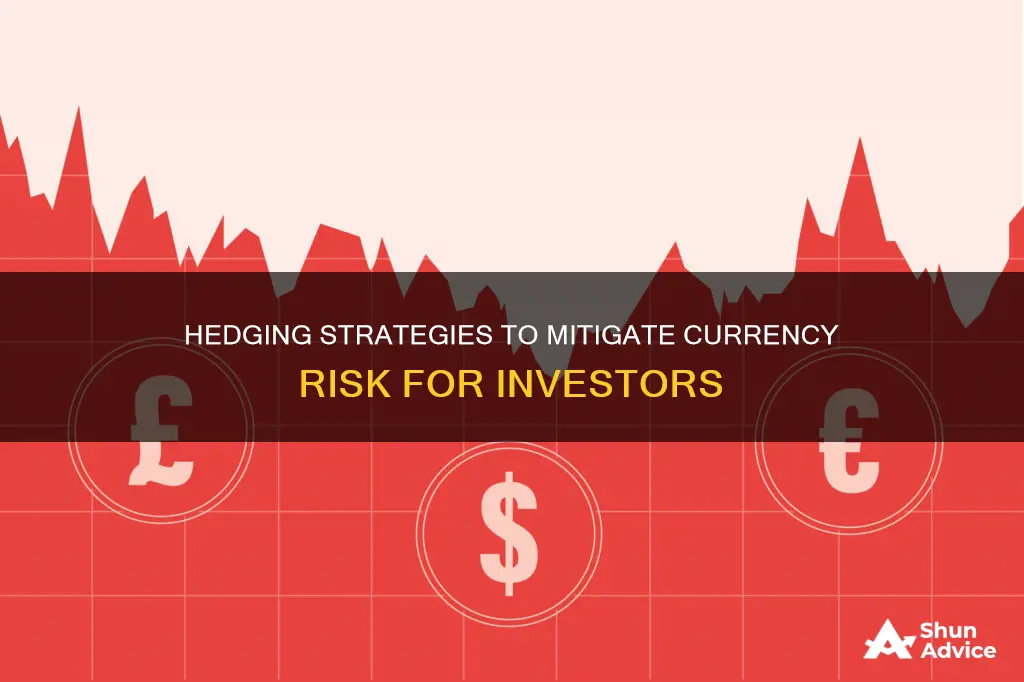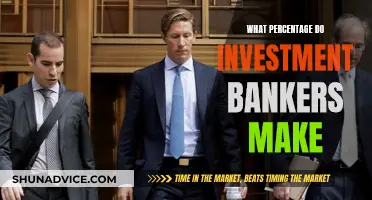
Exchange rate risk is an unavoidable risk of foreign investment, but it can be mitigated through hedging techniques. Foreign exchange (forex) risk arises from the potential changes in the exchange rate of one currency in relation to another. This can lead to financial loss, especially when the exchange rate fluctuates unfavourably. Hedging strategies are important for businesses to implement to reduce the adverse effects of exchange rate fluctuations on investment returns. There are several ways to hedge out exchange rate risk, including currency forwards, futures, ETFs, options, and currency swaps.
| Characteristics | Values |
|---|---|
| Definition | Exchange rate risk, or foreign exchange (forex) risk, is the risk of loss due to fluctuations in exchange rates between currencies. |
| Cause | Fluctuations in the investor's local currency compared to the foreign-investment currency. |
| Who is at risk? | Anyone who makes non-local payments, including those who buy overseas supplies, sell products in another country, or outsource tasks to foreign staff. |
| Types of risk | Transaction risk, translation risk, and economic risk. |
| Effect | Can erode returns from overseas investments. |
| Rule of thumb | Leave exchange rate risk unhedged when the local currency is depreciating against the foreign-investment currency, but hedge the risk when the local currency is appreciating. |
| Hedging techniques | Currency forwards, futures, ETFs, or options. |
| Hedging via forwards | Deals in the FX market that guarantee a certain exchange rate for the purchase or sale of a currency at an agreed date. |
| Hedging via put options | Offers the opportunity to sell a specific amount of a foreign currency at a predetermined price once currency losses move above a predetermined level. |
| Hedging via collars | Comprise two option contracts: a put option and a call option. Helps manage currency risk by limiting exposure to swings in FX rates within a certain range. |

Currency forwards
A currency forward contract allows the purchaser to lock in the price they pay for a currency. In other words, the exchange rate is set for a specific period, protecting the value of the underlying investment. For example, a US investor holding a euro-denominated bond maturing in a year may want to enter into a forward contract to sell euros and buy US dollars at the current one-year forward rate if they are concerned about the risk of the euro declining against the dollar.
Understanding the Private Equity Investment Cycle
You may want to see also

Currency futures
To use currency futures effectively, investors need to determine their level of risk tolerance and the extent of their exposure to currency fluctuations. They should also continuously monitor their positions and adjust them as market conditions change. Additionally, it is important to stay updated on global economic trends and geopolitical developments that can impact currency markets.
While currency futures can be a useful tool for hedging exchange rate risk, they may not be suitable for all investors. It is important to carefully consider the costs, available instruments, and time horizons associated with currency hedging strategies before implementing them. Consulting financial experts for guidance on currency hedging strategies can also be beneficial.
¿Qué es Investment Management? Maximizando tus inversiones
You may want to see also

Currency ETFs
These instruments replicate the movements of the currency in the exchange market by either holding currency cash deposits in the currency being tracked or using futures contracts on the underlying currency.
There are several choices of currency ETFs in the marketplace. You can purchase ETFs that track individual currencies, for example, the Swiss franc is tracked by the CurrencyShares Swiss Franc Trust (FXF). If you think the Swiss franc is set to rise against the US dollar, you may want to purchase this ETF. A short sell on the ETF can be placed if you think the Swiss franc is set to fall.
You can also purchase ETFs that track a basket of different currencies. For example, the Invesco DB US Dollar Index Bullish ETF (UUP) and Bearish (UDN) funds track the US dollar up or down against the euro, Japanese yen, British pound, Canadian dollar, Swedish krona, and Swiss franc. If you think the US dollar is going to fall broadly, you can buy the Invesco DB US Dollar Index Bearish ETF.
There are even more active currency strategies used in currency ETFs, specifically the DB G10 Currency Harvest Fund (DBV), which tracks the Deutsche Bank G10 Currency Future Harvest Index. This index takes advantage of yield spreads by purchasing futures contracts in the highest-yielding currencies in the G10 and selling futures in the three G10 currencies with the lowest yields.
In general, much like other ETFs, when you sell a currency ETF, if the foreign currency has appreciated against the dollar, you will earn a profit. On the other hand, if the ETF's currency or underlying index has gone down relative to the dollar, you'll end up with a loss.
Smart Investing: Earning $500 with a Simple Strategy
You may want to see also

Currency options
For example, consider an investor who has bought Japanese assets and is concerned about the risk of the yen depreciating against their domestic currency. They can purchase a currency option that gives them the right to convert their yen into their domestic currency at a specific exchange rate on or before the expiration date. If the exchange rate moves adversely, they can exercise their option and convert their yen at the strike price, limiting their losses. On the other hand, if the exchange rate moves in their favour, they can choose not to exercise the option and instead convert their yen at the prevailing market rate, allowing them to benefit from the favourable movement.
Overall, currency options are a powerful tool for managing foreign exchange risk, offering protection from adverse rate movements while also providing the potential to benefit from favourable ones. They are a popular choice for hedging among investors due to their flexibility and accessibility.
Savings and Investments: Economy's Growth Engine
You may want to see also

Currency swaps
A currency swap is a financial instrument where two parties exchange interest payments in one currency for another. The principal amounts are predetermined dollar amounts that are used as a basis to calculate the interest rate payments, which do change hands. The principal amount is never actually repaid.
For example, a US company (Party A) wants to open a €3 million plant in Germany, where its borrowing costs are higher than in the US. It can borrow €3 million at 8% in Europe or $5 million at 7% in the US. The company borrows the $5 million at 7% and enters into a swap to convert the dollar loan into euros. Party B, a German company, requires $5 million in US funds and can borrow at a cheaper rate of 6% domestically. The two parties will then exchange these fixed amounts every six months for the duration of the contract.
Portfolio Investment: A Long-Term Financial Journey
You may want to see also
Frequently asked questions
Exchange rate risk, or foreign exchange (forex) risk, is the risk of losing money due to changes in the exchange rate of one currency in relation to another.
Exchange rate risk can impact a business's financial performance and profitability. For example, if a company's home currency appreciates against the foreign currency it sells its products in, it could lose a significant portion of its profits.
There are three main types of exchange rate risk: transaction risk, economic risk, and translation risk. Transaction risk arises when there is a change in the exchange rate before a transaction is settled. Economic risk refers to the long-term strategic risk that affects future cash flows and market value due to fluctuating exchange rates. Translation risk occurs when a company's performance is measured in its domestic currency while holding assets, liabilities, or equities in foreign currencies.
Businesses can use various financial instruments to hedge against exchange rate risk, including forward contracts, currency options, currency swaps, and currency ETFs. These tools help businesses manage their foreign currency risks and lock in exchange rates for a set period.
Hedging exchange rate risk can improve the predictability of financial outcomes and protect investment portfolios from unforeseen shocks. It provides security and allows businesses to plan their fiscal budgets more accurately. However, hedging can also be costly and may result in opportunity costs if favourable exchange rate movements are missed. Additionally, it can be challenging to predict currency movements accurately.







